ALAN DIX, JANET FINLAY,
GREGORY D. ABOWD, RUSSELL BEALE
HUMAN–COMPUTER
INTERACTION
THIRD EDITION
Much has changed since the first edition of
Human–Computer Interaction was published. Ubiquitous
computing and rich sensor-filled environments are
finding their way out of the laboratory, not just into
movies but also into our workplaces and homes. The
computer has broken out of its plastic and glass
bounds providing us with networked societies where
personal computing devices from mobile phones to
smart cards fill our pockets and electronic devices
surround us at home and work. The web too has grown
from a largely academic network into the hub of
business and everyday lives. As the distinctions between
the physical and the digital, and between work and
leisure start to break down, human–computer
interaction is also changing radically.
The excitement of these changes is captured in this new
edition, which also looks forward to other emerging
technologies. However, the book is firmly rooted in
strong principles and models independent of the
passing technologies of the day: these foundations will
be the means by which today’s students will
understand tomorrow’s technology.
The third edition of Human–Computer Interaction can be
used for introductory and advanced courses on HCI,
Interaction Design, Usability or Interactive Systems
Design. It will also prove an invaluable reference for
professionals wishing to design usable computing
devices.
Accompanying the text is a comprehensive website
containing a broad range of material for instructors,
students and practitioners, a full text search facility for
the book, links to many sites of additional interest and
much more: go to www.hcibook.com
New to this edition:
� A revised structure, reflecting the
growth of HCI as a discipline,
separates out basic material suitable
for introductory courses from more
detailed models and theories.
� New chapter on interaction design
adds material on scenarios and basic
navigation design.
� New chapter on universal design,
substantially extending the coverage
of this material in the book.
� Updated and extended treatment of
socio/contextual issues.
� Extended and new material on novel
interaction, including updated
ubicomp material, designing
experience, physical sensors and a
new chapter on rich interaction.
� Updated material about the web
including dynamic content.
� Relaunched website including case
studies, WAP access and search.
Alan Dix is Professor in the Department of Computing, Lancaster, UK. Janet Finlay is
Professor in the School of Computing, Leeds Metropolitan University, UK. Gregory D. Abowd is
Associate Professor in the College of Computing and GVU Center at Georgia Tech, USA.
Russell Beale is lecturer at the School of Computer Science, University of
Birmingham, UK.
Cover illustration by Peter Gudynas
www.pearson-books.com
I
N
T
E
R
A
C
T
H
U
M
A
N
–
C
O
M
P
U
T
E
R
I
O
N
THIRD
EDITION
DIX
FINLAY
ABOWD
BEALE
�
Human–Computer Interaction
�
We work with leading authors to develop the
strongest educational materials in computing,
bringing cutting-edge thinking and best learning
practice to a global market.
Under a range of well-known imprints, including
Prentice Hall, we craft high quality print and
electronic publications which help readers to
understand and apply their content, whether
studying or at work.
To find out more about the complete range of our
publishing, please visit us on the world wide web at:
www.pearsoned.co.uk
�
Human–Computer Interaction
Third Edition
Alan Dix, Lancaster University
Janet Finlay, Leeds Metropolitan University
Gregory D. Abowd, Georgia Institute of Technology
Russell Beale, University of Birmingham
�
Pearson Education Limited
Edinburgh Gate
Harlow
Essex CM20 2JE
England
and Associated Companies throughout the world
Visit us on the world wide web at:
www.pearsoned.co.uk
First published 1993
Second edition published 1998
Third edition published 2004
© Prentice-Hall Europe 1993, 1998
© Pearson Education Limited 2004
The rights of Alan Dix, Janet E. Finlay, Gregory D. Abowd and Russell Beale
to be identified as authors of this work have been asserted by them in
accordance with the Copyright, Designs and Patents Act 1988.
All rights reserved. No part of this publication may be reproduced, stored
in a retrieval system, or transmitted in any form or by any means, electronic,
mechanical, photocopying, recording or otherwise, without either the prior
written permission of the publisher or a licence permitting restricted copying
in the United Kingdom issued by the Copyright Licensing Agency Ltd,
90 Tottenham Court Road, London W1T 4LP.
All trademarks used herein are the property of their respective owners. The use
of any trademark in this text does not vest in the author or publisher any trademark
ownership rights in such trademarks, nor does the use of such trademarks imply any
affiliation with or endorsement of this book by such owners.
ISBN-13: 978-0-13-046109-4
ISBN-10: 0-13-046109-1
British Library Cataloguing-in-Publication Data
A catalogue record for this book is available from the British Library
10
10
9
09
8
7
08
6
07
5
06
4
3
Typeset in 10/121/2pt Minion by 35
Printed and bound by Scotprint, Haddington
�
BRIEF CONTENTS
Guided tour
Foreword
Preface to the third edition
Publisher’s acknowledgements
Introduction
Part 1
FOUNDATIONS
Chapter 1
Chapter 2
Chapter 3
Chapter 4
The human
The computer
The interaction
Paradigms
Part 2
DESIGN PROCESS
Interaction design basics
HCI in the software process
Design rules
Implementation support
Evaluation techniques
Chapter 5
Chapter 6
Chapter 7
Chapter 8
Chapter 9
Chapter 10 Universal design
Chapter 11 User support
Part 3
MODELS AND THEORIES
Chapter 12 Cognitive models
Chapter 13
Socio-organizational issues and stakeholder requirements
xiv
xvi
xix
xxiii
1
9
11
59
123
164
189
191
225
258
289
318
365
395
417
419
450
�
vi Brief Contents
Chapter 14 Communication and collaboratio0n models
Chapter 15 Task analysis
Chapter 16 Dialog notations and design
Chapter 17 Models of the system
Chapter 18 Modeling rich interaction
Part 4
OUTSIDE THE BOX
Chapter 19 Groupware
Chapter 20 Ubiquitous computing and augmented realities
Chapter 21 Hypertext, multimedia and the world wide web
References
Index
475
510
544
594
629
661
663
716
748
791
817
�
CONTENTS
Guided tour
Foreword
Preface to the third edition
Publisher’s acknowledgements
Introduction
Part 1
FOUNDATIONS
Chapter 1 The human
Introduction
Input–output channels
Design Focus: Getting noticed
Design Focus: Where’s the middle?
1.1
1.2
1.3 Human memory
Design Focus: Cashing in
Design Focus: 7 ± 2 revisited
1.4 Thinking: reasoning and problem solving
1.5
1.6
1.7
1.8
Design Focus: Human error and false memories
Emotion
Individual differences
Psychology and the design of interactive systems
Summary
Exercises
Recommended reading
Chapter 2 The computer
Introduction
2.1
2.2 Text entry devices
Design Focus: Numeric keypads
Positioning, pointing and drawing
2.3
xiv
xvi
xix
xxiii
1
9
11
12
13
16
22
27
30
32
39
49
51
52
53
55
56
57
59
60
63
67
71
�
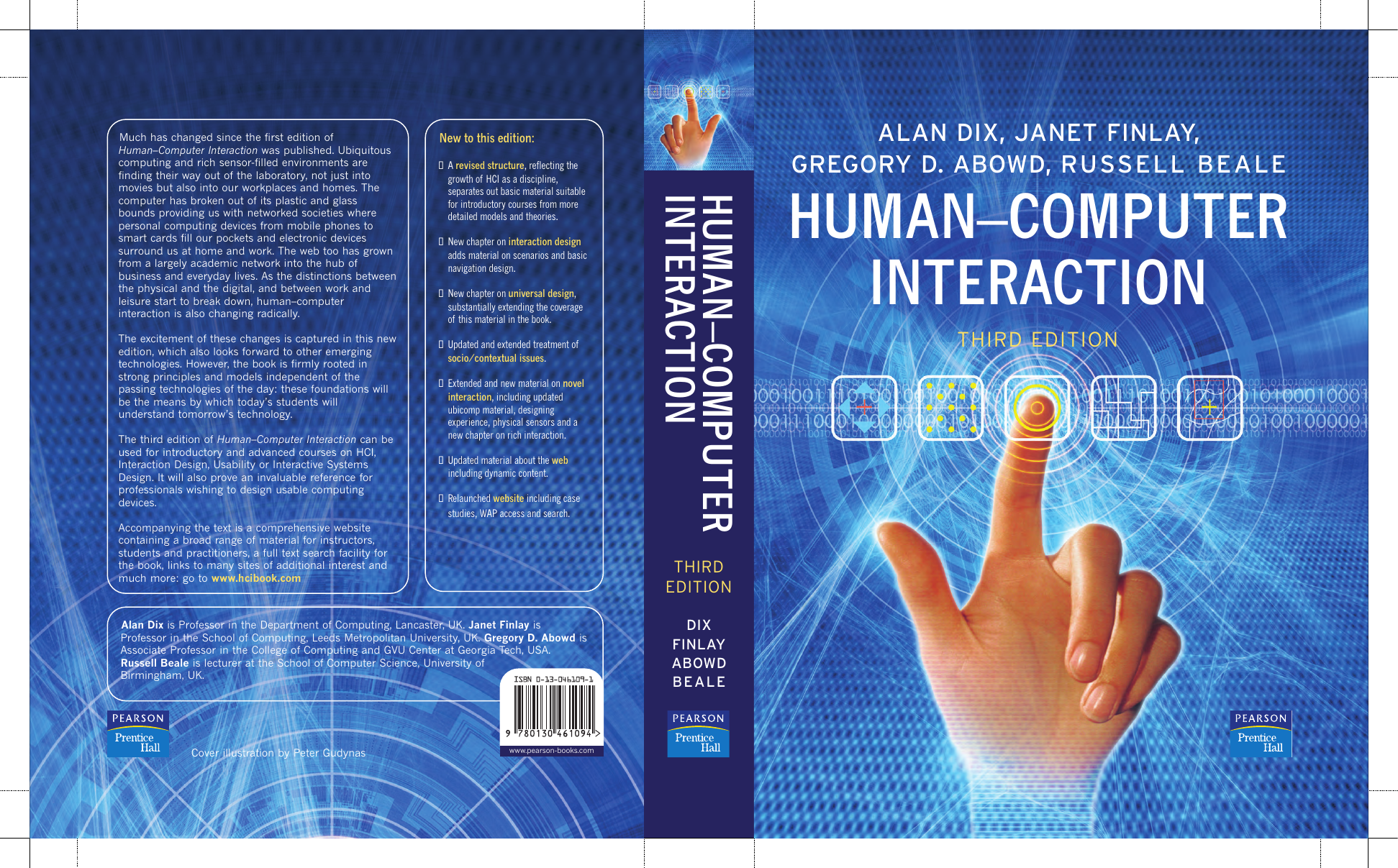
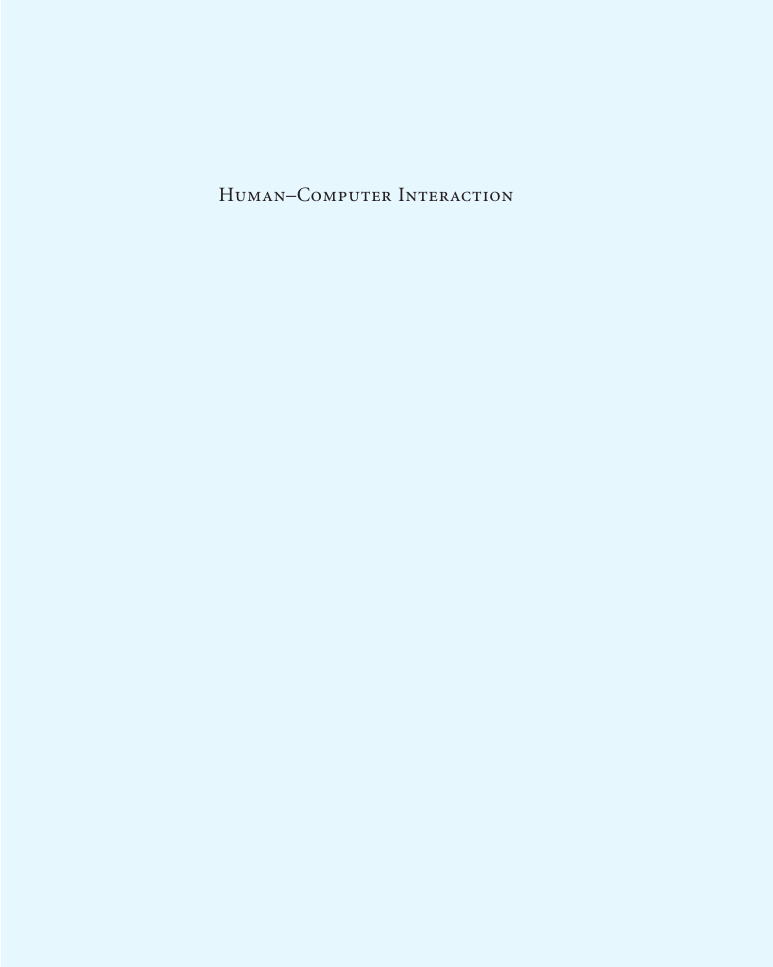

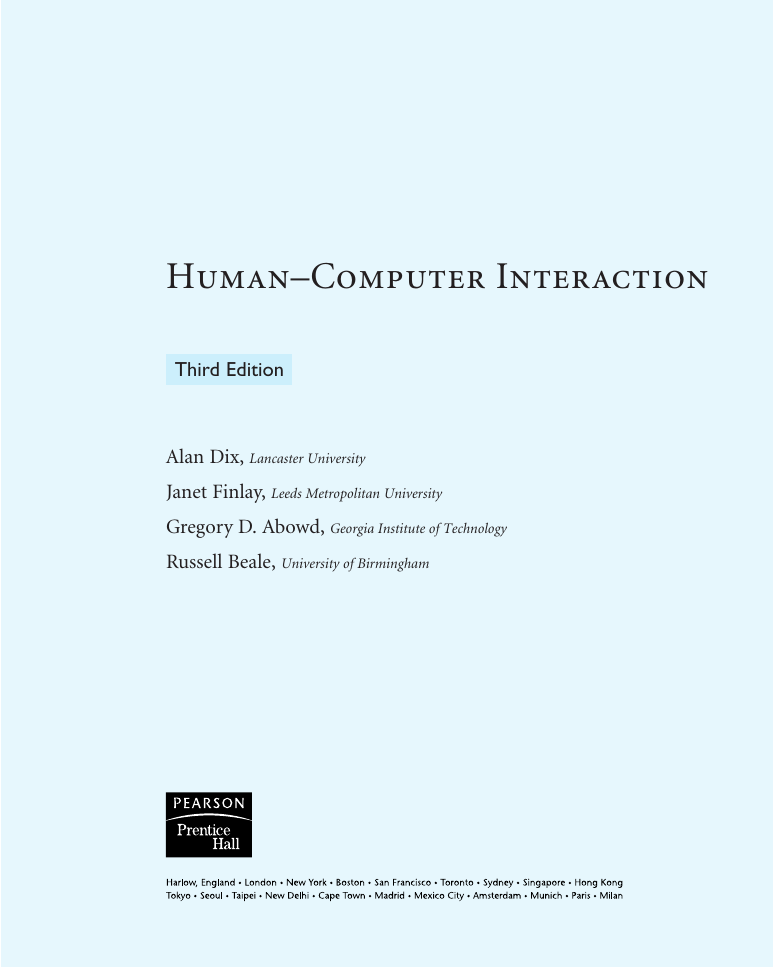

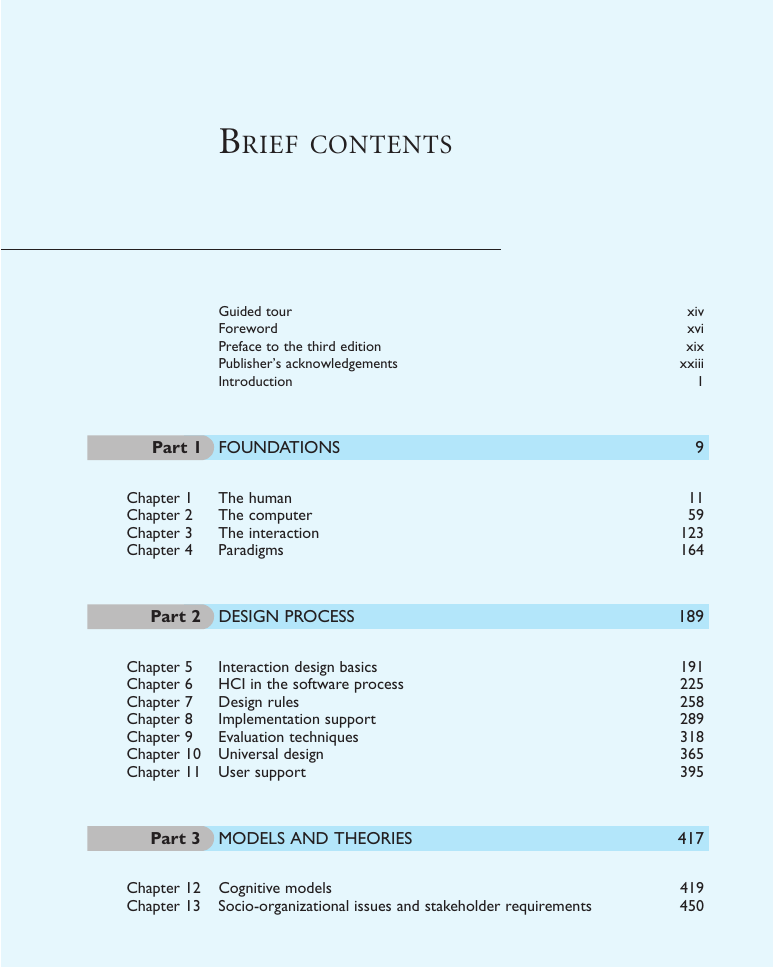

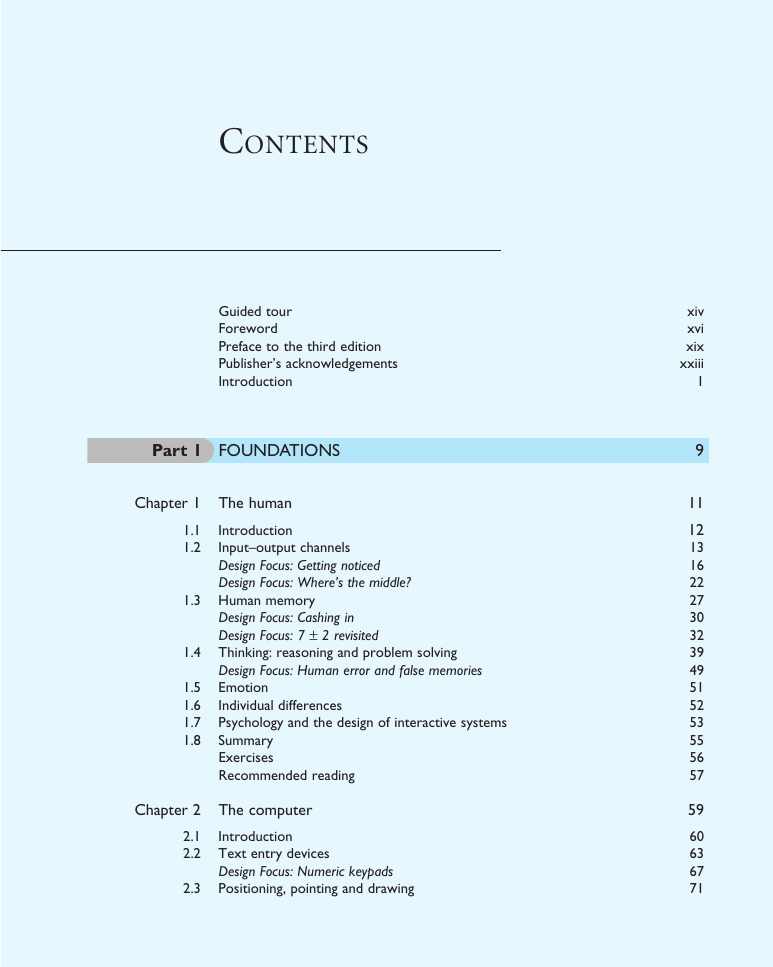








 2023年江西萍乡中考道德与法治真题及答案.doc
2023年江西萍乡中考道德与法治真题及答案.doc 2012年重庆南川中考生物真题及答案.doc
2012年重庆南川中考生物真题及答案.doc 2013年江西师范大学地理学综合及文艺理论基础考研真题.doc
2013年江西师范大学地理学综合及文艺理论基础考研真题.doc 2020年四川甘孜小升初语文真题及答案I卷.doc
2020年四川甘孜小升初语文真题及答案I卷.doc 2020年注册岩土工程师专业基础考试真题及答案.doc
2020年注册岩土工程师专业基础考试真题及答案.doc 2023-2024学年福建省厦门市九年级上学期数学月考试题及答案.doc
2023-2024学年福建省厦门市九年级上学期数学月考试题及答案.doc 2021-2022学年辽宁省沈阳市大东区九年级上学期语文期末试题及答案.doc
2021-2022学年辽宁省沈阳市大东区九年级上学期语文期末试题及答案.doc 2022-2023学年北京东城区初三第一学期物理期末试卷及答案.doc
2022-2023学年北京东城区初三第一学期物理期末试卷及答案.doc 2018上半年江西教师资格初中地理学科知识与教学能力真题及答案.doc
2018上半年江西教师资格初中地理学科知识与教学能力真题及答案.doc 2012年河北国家公务员申论考试真题及答案-省级.doc
2012年河北国家公务员申论考试真题及答案-省级.doc 2020-2021学年江苏省扬州市江都区邵樊片九年级上学期数学第一次质量检测试题及答案.doc
2020-2021学年江苏省扬州市江都区邵樊片九年级上学期数学第一次质量检测试题及答案.doc 2022下半年黑龙江教师资格证中学综合素质真题及答案.doc
2022下半年黑龙江教师资格证中学综合素质真题及答案.doc